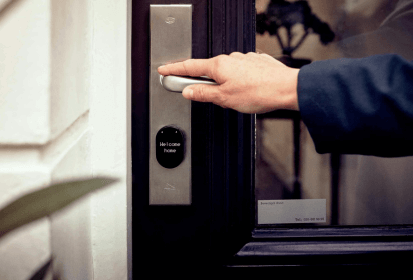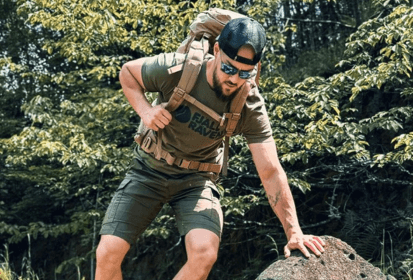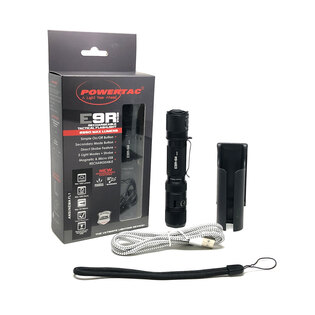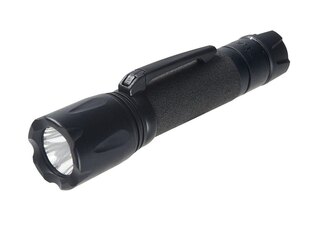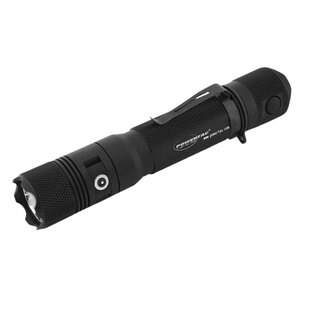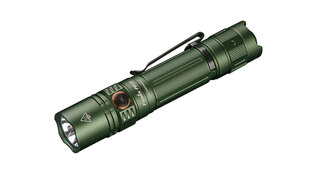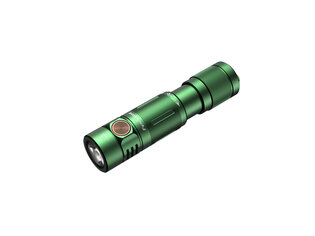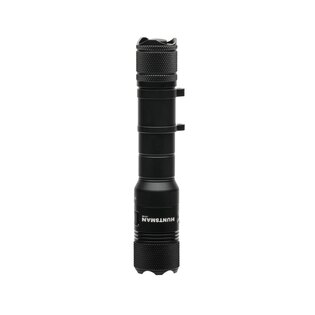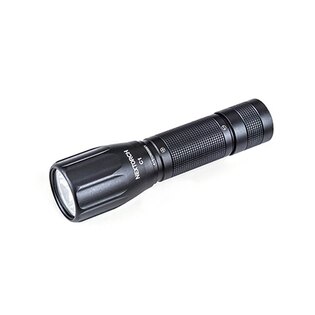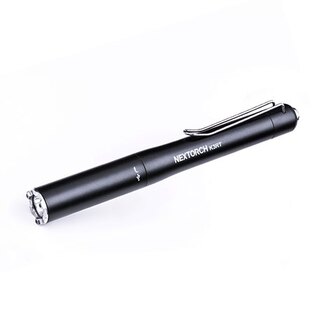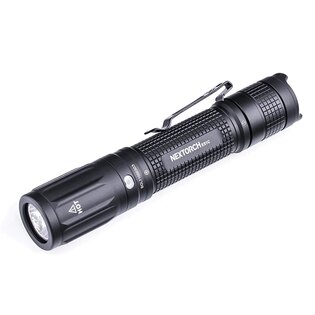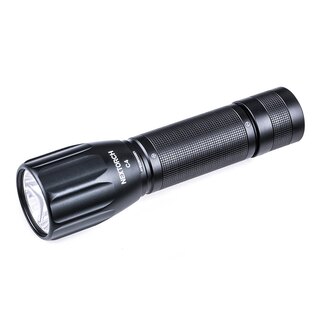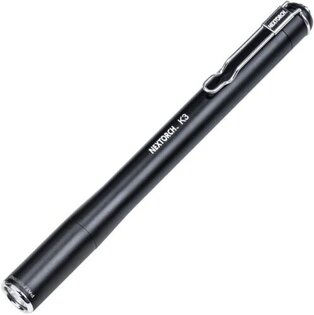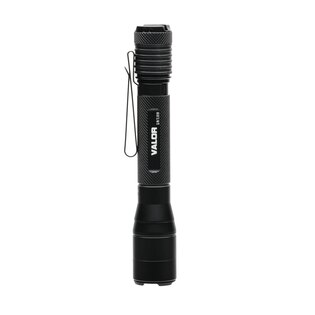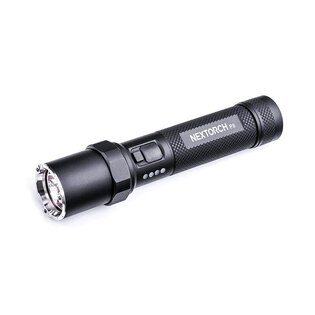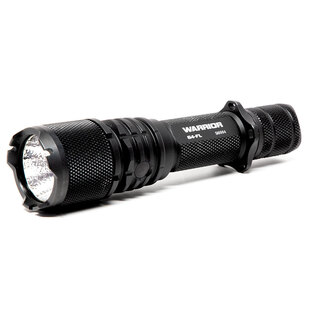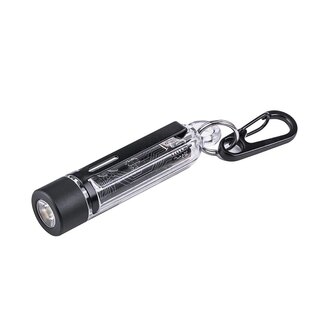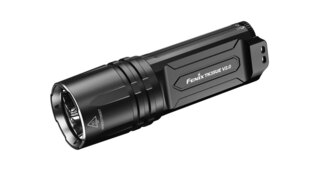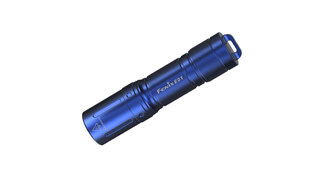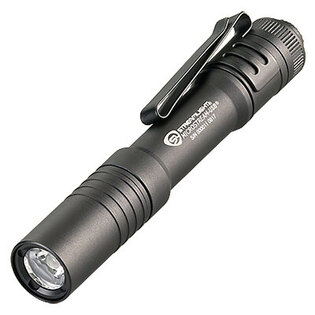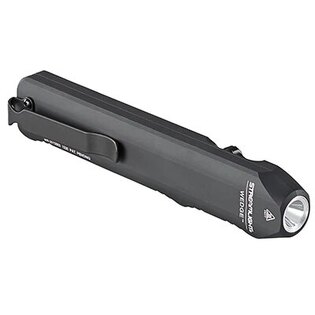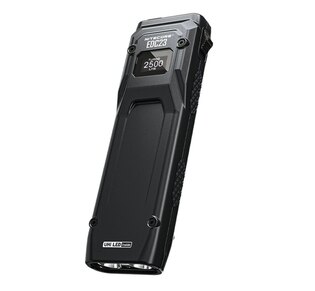How to Choose a Pocket Flashlight: A Practical Guide for Everyday Use
A pocket flashlight is one of those things you truly appreciate the moment you don’t have it on hand. It’s perfect for the car, your handbag, evening dog walks, power outages, or weekend trips into nature. Modern LED flashlights are powerful, durable, and compact enough to fit in your palm – but how do you choose the right one? In this guide, we’ll help you find the ideal model based on how you plan to use it most often.
Why Carry a Pocket Flashlight?
You might be thinking: Why get a flashlight when I have a phone or a headlamp? The truth is, a pocket flashlight is often the most practical solution – compact, powerful, and always ready. You'll appreciate it when you don’t want (or can't) hold your phone or strap on a headlamp.
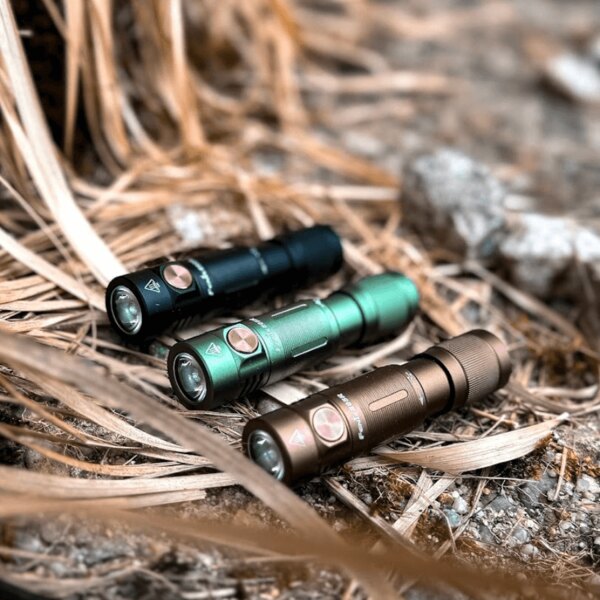
Stylish EDC flashlights by Fenix featuring a compact body and pocket clip. Ideal for pockets, backpacks, or daily carry kits. Available in multiple color options.
When Is a Pocket Flashlight Useful?
🔦 Looking for something under a car seat or in the garage.
🔦 Walking the dog after dark.
🔦 Power outages when you need to save your phone battery.
🔦 Camping or sleeping outdoors as a backup light source.
🔦 As a safety tool in your purse or car (SOS/strobe modes).
🔦 As part of your everyday carry (EDC) gear (pocket clip, magnetic base).
🔦 When you need to light something or someone else – not yourself (unlike headlamps).
In short, a pocket flashlight is a small safety net that takes up no space – but proves invaluable when it matters most.
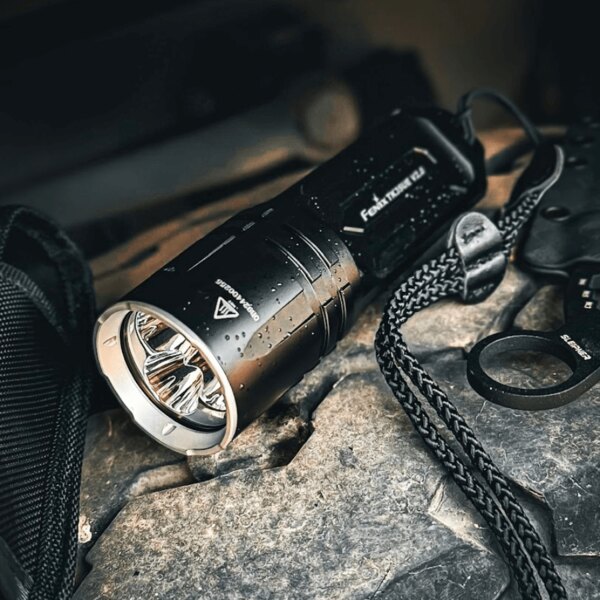
Rugged tactical Fenix flashlight with IPX8 certification, high output, and a durable aerospace-grade aluminum body. Suitable for outdoor, professional, and rescue use.
Key Factors When Choosing a Pocket Flashlight
Choosing a flashlight isn’t just about “how bright it is.” Battery life, power source, durability, and usability are equally important. Here are the main criteria to consider:
1. Brightness (Lumens)
The brightness is measured in lumens and indicates how much light the flashlight emits. More lumens mean a brighter beam – but usually also greater power consumption, especially on maximum settings.
Indicates how bright the flashlight is. The more lumens, the brighter the light – but also the higher the energy consumption.
| Use Case | Recommended Output |
|---|---|
| Reading, indoor use | 50–150 lm |
| Outdoor walks, general use | 200–500 lm |
| Camping, power outages | 500–1000 lm |
| Demanding tasks, security | 1000+ lm |
Tip: Choose a model with multiple brightness modes – it saves battery and adapts to different situations.
2. Power Source and Battery Life
There are three main power options, each with its own pros and cons:
Different power options offer varying levels of availability, performance, and user convenience.
| Power Type | Advantages | Disadvantages |
|---|---|---|
| Replaceable batteries (AA/AAA) | Widely available, easy to carry spares | Lower performance, needs frequent replacement |
| Built-in rechargeable battery | USB charging, compact design | Dependent on charging, battery ages over time |
| Hybrid (dual power) | Flexible, reliable in the field | Higher cost, bulkier size |
Tip: USB-C charging is the current standard – fast, universal, and convenient.
3. Beam Distance and Shape
Beam distance refers to how far the flashlight can effectively illuminate.
Each beam type serves a different purpose – from close-range visibility to long-distance search.
| Beam Type | Best For | Description |
|---|---|---|
| Wide (flood) | Close-up work, walking | Illuminates a broad area, shorter reach |
| Narrow (spot) | Long-range search | Strong, focused light beam |
| Adjustable (zoom) | Versatile use | Smooth transition between flood and spot modes |
Tip: If you want one flashlight that does it all, go for an adjustable beam.
4. Runtime
Battery life varies depending on the mode and battery capacity. Pay attention to:
Runtime is listed separately for each mode and depends heavily on the battery type and light output setting.
- Low mode: often lasts dozens of hours
- Maximum output: typically 1–3 hours
- Moonlight mode: ultra-low output, can last over 100 hours
Tip: If runtime is not specified for a particular mode, the numbers can be misleading.
5. Durability
A good flashlight should withstand both drops and rain. Focus on these two values:
A quality flashlight should withstand everyday drops and water exposure.
| Parameter | What It Means |
|---|---|
| Impact Resistance | Withstands drops from 1–2 meters without loss of function |
| Water Resistance (IPX) | IPX4 = rain-resistant, IPX7–8 = submersible |
Tip: For everyday use, IPX4 is enough. For extreme conditions, look for IPX7 or higher.
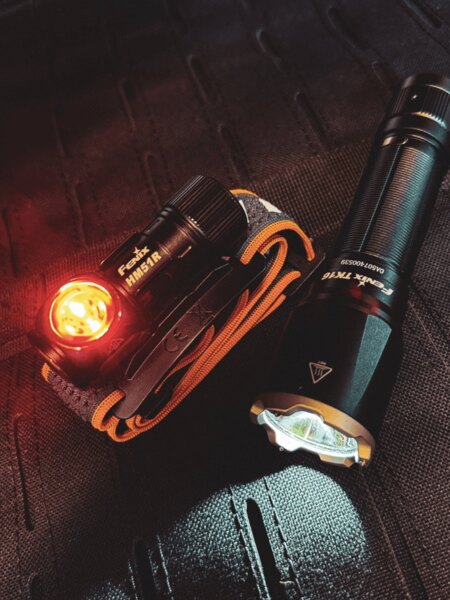
A combination of the Fenix HM headlamp with red light mode and a high-powered handheld flashlight with a tactical bezel. Gear for the outdoors, rescue teams, and night work in the field.
Additional Features You’ll Appreciate
Brightness, runtime, durability – all important. But it’s often the “invisible” details that determine whether your flashlight becomes an everyday companion or just sits in a drawer. Look for these usability features that can make a big difference in practice:
✅ Lockout Mode
Prevents accidental activation in your bag or pocket. Especially useful for small EDC models to protect battery life – and your trust in the flashlight.
✅ Magnetic Base
Attach it to a car hood, boiler, or fuse box. Once you’ve dropped a screw behind the couch, you’ll understand how handy this is.
✅ Pocket/Belt/Backpack Clip
A small flashlight with a clip becomes a true everyday tool. Attach it to your backpack, jeans pocket, or cap brim – and get light exactly where you need it.
✅ Battery Indicator
A quick status check: green – all good, orange – grab a power bank, red – find an outlet. Some models even show an exact percentage.
✅ Mode Memory
The flashlight remembers the last mode used. Perfect when you're walking down a hallway at night – no need to blind yourself with max brightness.
✅ Glove-Friendly Operation
In winter, while biking, or working outdoors, it's ideal to operate the flashlight without removing your gloves.
✅ Smart Design Touches
Some models offer even more convenience:
🟠 Direct access to low or turbo mode without toggling.
🟠 Flat-tail standing for area lighting.
🟠 Side LEDs for work or reading.
Before purchasing, try to imagine specific situations where you’ll actually use the flashlight. The most useful feature is the one that makes that moment easier – not the one that looks best on a spec sheet.
| Feature | What It Does | Best For |
|---|---|---|
| Lockout function | Prevents accidental activation in a bag or pocket | Everyday carry, travel |
| Magnetic base | Attaches to metal surfaces (car, furniture, equipment) | Drivers, home use, workshops |
| Pocket/backpack clip | Mounts to clothing, cap brim, or backpack | EDC users, hikers |
| Battery indicator | Shows current charge level | Anyone who doesn’t want to be left in the dark |
| Mode memory | Turns on in the last used mode | Indoor use, night navigation |
| Glove-friendly operation | Easy to turn on even in winter | Outdoor work, cold conditions |
| Side LEDs / flat beam | Alternative light pattern for work or reading | Workshops, home, camping |
| Quick-access modes | Instant access to turbo/low without cycling | EDC, demanding conditions |
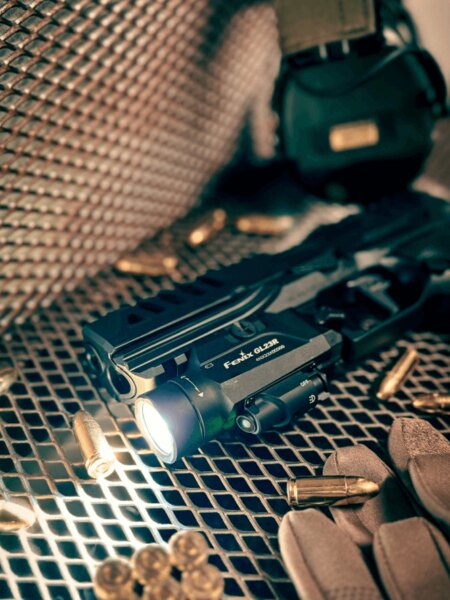
Compact Fenix GL22R tactical flashlight with weapon mount, dual lighting modes, and rapid activation. Engineered for professional use by law enforcement and armed forces.
How to Choose Based on Your Use Case
There are countless models on the market, but no flashlight is truly universal. Before buying, think about where and how you’ll use it most often. This will help you strike the right balance of size, power, and features.
| Use Case | What to Look For | Recommended Features |
|---|---|---|
| Home use, power outages | 100–300 lm, compact, easy to operate | Mode memory, clip, lockout |
| Dog walks, city use | 200–500 lm, wide beam, good runtime | Low mode, clip, lockout function |
| Car use, emergencies | 300–800 lm, 5+ hour runtime, durability | Magnetic base, SOS mode, USB charging |
| Camping, outdoor activities | 500–1000+ lm, IPX4+, multiple modes | Flood/spot beam, long runtime, glove-friendly controls |
| EDC – everyday carry | 150–500 lm, under 10 cm, lightweight | Clip, USB-C, mode memory, lockout |
Tip: If you're unsure what to prioritize, choose based on your most common use case. A flashlight that's always with you is more valuable than one that “does it all” but stays at home.
⭐ Recommended Pocket Flashlight Models (2025)
Recommended Models
Lightweight pen-style flashlight with a clip – ideal for everyday carry (EDC) or medical professionals.
High-output rechargeable flashlight with USB-C and multiple modes. A great option for road trips, vehicles, or demanding conditions.
Rugged and durable flashlight, ideal for field work or outdoor use. Long throw and excellent build quality.
A versatile LED flashlight with high performance, reliability, and a compact body. Excellent value for money.
Summary: Choose the Flashlight That Fits You
Selecting a pocket flashlight is about more than just lumens or battery types. The best flashlight is the one you’ll actually use – because it’s convenient, easy to operate, and dependable when it counts.
Think about your typical use cases:
🟠 Power outages at home.
🟠 Evening dog walks.
🟠 Backup light in the car.
🟠 Day trips or daily carry.
And base your decision on that – considering brightness, runtime, size, and practical extras like a lockout mode, magnetic base, or USB-C charging.
Readers are further interested
